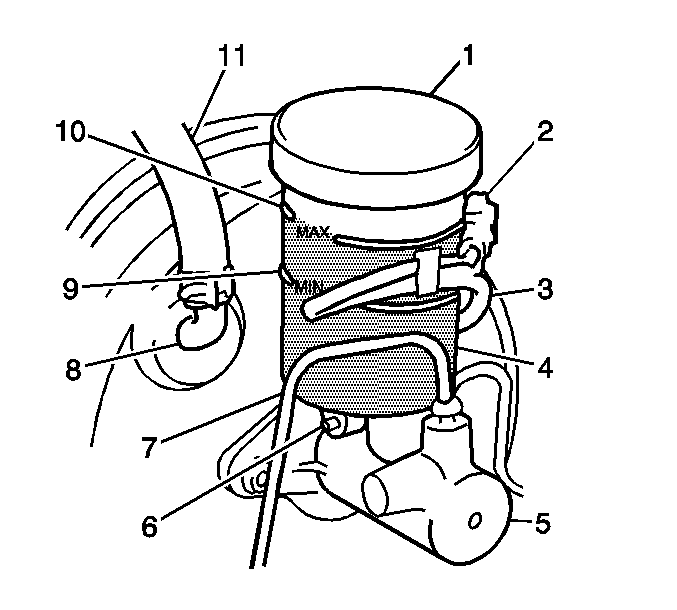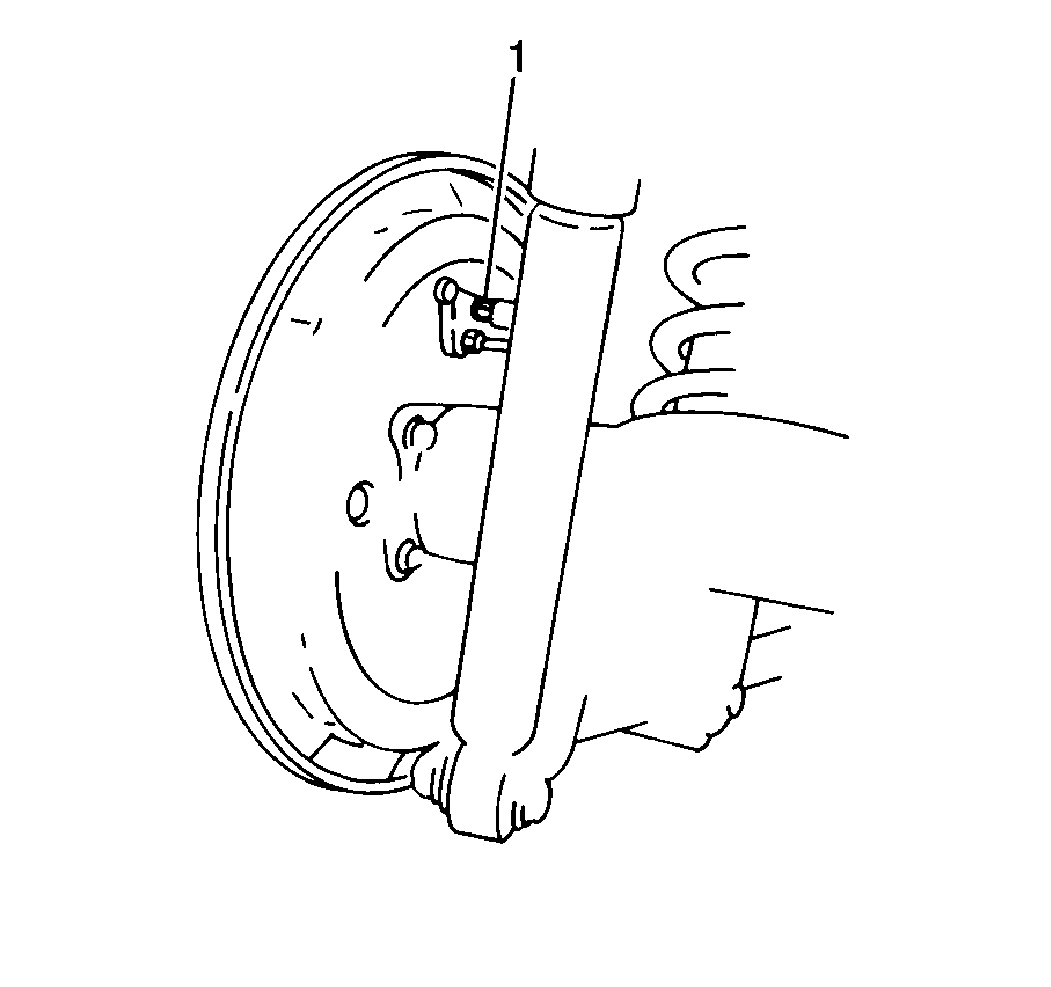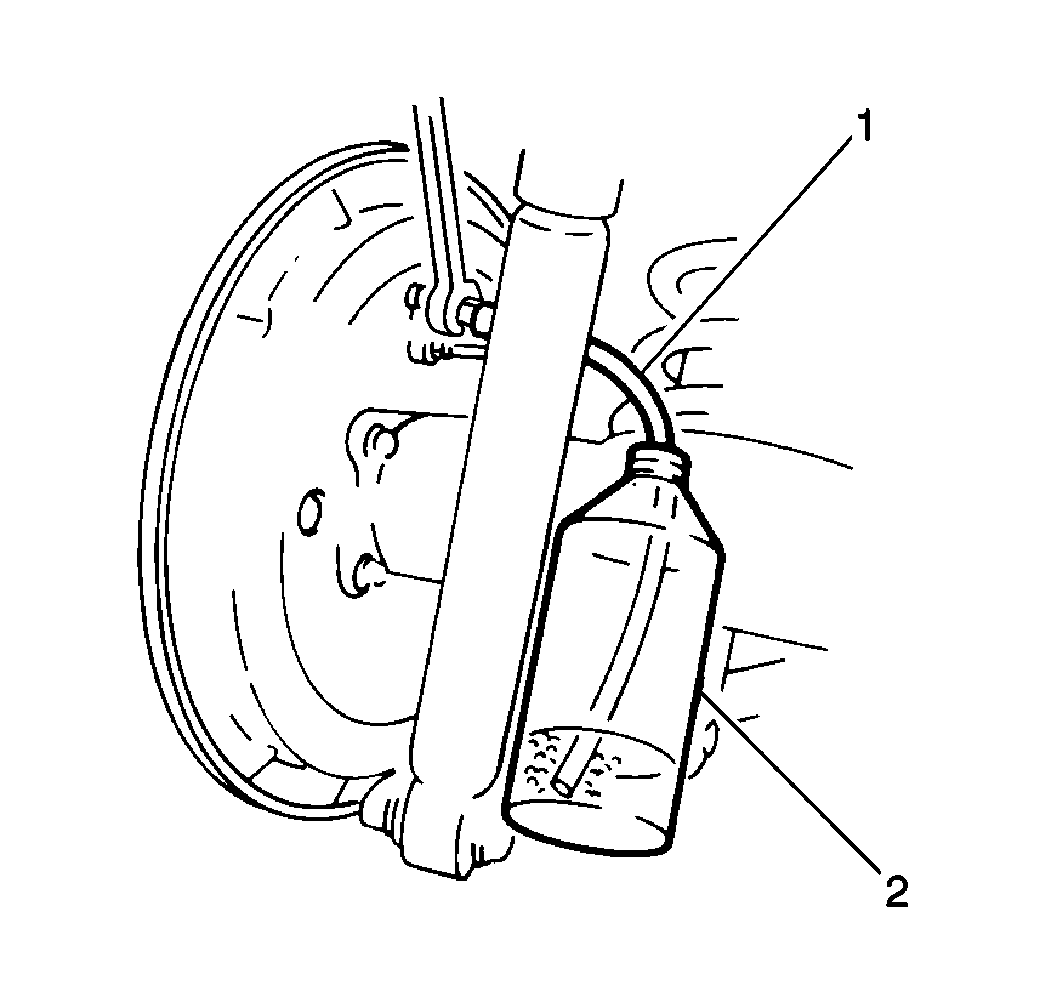Tools Required
| • | J 29532 Diaphragm Type Brake Bleeder |
| • | J 37762 Pressure Brake Bleeder Adapter |
Caution: Do not move the vehicle until a firm brake pedal is obtained. Air in the brake system can cause the loss of brakes with possible personal injury.
Caution: Brake fluid may irritate eyes and skin. In case of contact, take the
following actions:
• Eye contact--rinse thoroughly with water. • Skin contact--wash with soap and water. • If ingested--consult a physician immediately.
Caution: Remove all the air from the hydraulic brake system anytime the hydraulic brake system is opened for repair. The entire bleeding procedure must be followed. Failure to remove all the air in the hydraulic brake system will result in reduced braking performance and possible personal injury.
Notice: Brake fluid will damage electrical connections and painted surfaces. Use shop cloths, suitable containers, and fender covers to prevent brake fluid from contacting these areas. Always re-seal and wipe off brake fluid containers to prevent spills.
Important: Bleed the hydraulic brake system in the following sequence:
If air enters the hydraulic brake system due to low brake fluid level, bleed the system at the 4 bleeder valves.
If you disconnect a brake pipe from the master cylinder, bleed the system at the 4 bleeder valves.
If you disconnect a brake pipe or a fitting between the master cylinder and the wheels, bleed the system at the bleeder valve served by the brake pipe or fitting.
If you disconnect a brake pipe or brake hose at only 1 wheel, then bleed the system at the bleeder valve for that wheel.
Manual Bleeding
- Ensure the engine is OFF.
- Press the brake pedal several times in order to remove the vacuum system reserve.
- Clean around the master cylinder reservoir cap (1).
- Remove the reservoir cap.
- Fill the reservoir with brake fluid. Keep the reservoir at least one-half full during the bleeding operation. Refer to Master Cylinder Reservoir Filling .
- Install the reservoir cap.
- Remove the bleeder valve cap (1).
- Attach a clear plastic or vinyl tube (1) to the bleeder valve. Submerge the other end of the tube in a clear container (2) partially filled with brake fluid.
- Have a second technician press the brake pedal several times, and then hold it fully pressed.
- With the brake pedal fully pressed, loosen the bleeder valve about ½ turn. The brake pedal should now fall all the way to the floor as brake fluid flows out of the bleeder valve into the clear fluid container.
- Close the bleeder valve.
- Have the second technician slowly release the pedal.
- Repeat this procedure until air bubbles no longer appear in the clear fluid container.
- Install the bleeder valve cap.
- Repeat this procedure at all bleeder valves that require bleeding.
- Replenish the brake fluid in the master cylinder reservoir to the MAX mark and install the cap. Refer to Master Cylinder Reservoir Filling .
- Pump the brake pedal.
- Inspect the hydraulic brake system for leaks.
- Inspect the brake pedal feel for sponginess and the brake indicator for an indication of an unbalanced pressure. Repeat the entire bleeding procedure in order to correct either of these conditions.



Notice: Use the correct fastener in the correct location. Replacement fasteners must be the correct part number for that application. Fasteners requiring replacement or fasteners requiring the use of thread locking compound or sealant are identified in the service procedure. Do not use paints, lubricants, or corrosion inhibitors on fasteners or fastener joint surfaces unless specified. These coatings affect fastener torque and joint clamping force and may damage the fastener. Use the correct tightening sequence and specifications when installing fasteners in order to avoid damage to parts and systems.
Tighten
| • | Tighten the caliper bleeder valve to 8.5 N·m (75.2 lb in). |
| • | Tighten the wheel cylinder bleeder valve to 7.5 N·m (66.4 lb in). |
Pressure Bleeding
Notice: Pressure bleeding equipment must be the diaphragm type and must have a rubber diaphragm between the air supply and the brake fluid. Air, moisture, oil and other contaminants can damage the hydraulic system.
- Install a J 37762 to the master cylinder.
- Charge the J 29532 to 140 to 172 kPa (20 to 25 psi).
- Connect the J 29532 line to the J 37762 and open the line valve.
- Remove the bleeder valve cap (1).
- Attach a clear plastic or vinyl tube (1) to the bleeder valve. Submerge the other end of the tube in a clear container (2) partially filled with brake fluid.
- Loosen the bleeder valve about ½ turn. Allow the fluid to flow until bubbles no longer appear in the fluid. Do not allow the J 29532 to run out of fluid. If the fluid should run out, air will enter the system and you must repeat the entire bleeding procedure.
- Close the bleeder valve.
- Install the bleeder valve cap.
- Repeat this procedure at all bleeder valves that require bleeding.
- Replenish the brake fluid in the master cylinder reservoir to the MAX mark and install the cap. Refer to Master Cylinder Reservoir Filling .
- Pump the brake pedal.
- Inspect the hydraulic brake system for leaks.
- Inspect the brake pedal feel for sponginess and the brake indicator for an indication of an unbalanced pressure. Repeat the entire bleeding procedure in order to correct either of these two conditions.
- Remove the J 37762 and the J 29532 from the master cylinder.


Notice: Use the correct fastener in the correct location. Replacement fasteners must be the correct part number for that application. Fasteners requiring replacement or fasteners requiring the use of thread locking compound or sealant are identified in the service procedure. Do not use paints, lubricants, or corrosion inhibitors on fasteners or fastener joint surfaces unless specified. These coatings affect fastener torque and joint clamping force and may damage the fastener. Use the correct tightening sequence and specifications when installing fasteners in order to avoid damage to parts and systems.
Tighten
| • | Tighten the caliper bleeder valve to 8.5 N·m (75.2 lb in). |
| • | Tighten the wheel cylinder bleeder valve to 7.5 N·m (66.4 lb in). |
